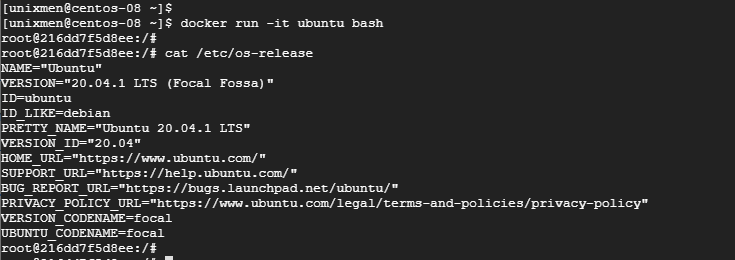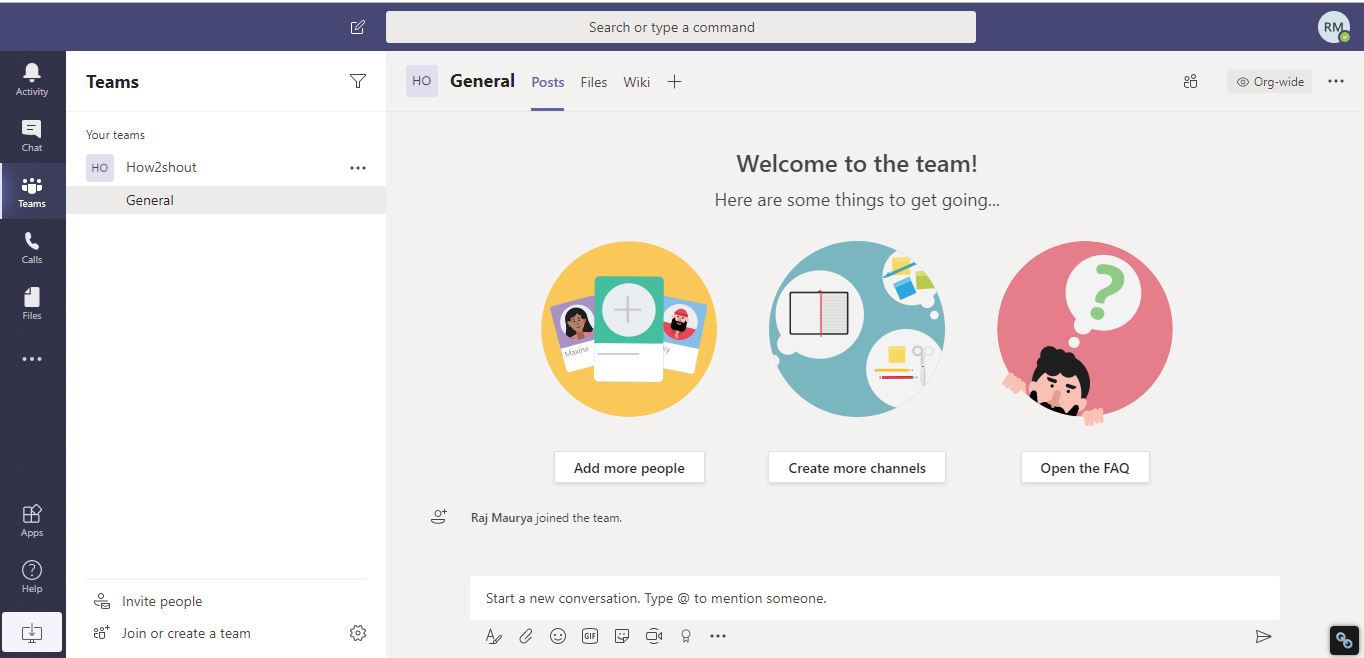The Docker containers by default run with the root privilege and so does the application that runs inside the container. This is another major concern from the security perspective because hackers can gain root access to the Docker host by hacking the application running inside the container.
Method 1 – Add user to Docker group
1. To run Docker as a non-root user, you have to add your user to the docker group.
Run a Docker Container in Ubuntu. In order to create and run a Docker container, first you need to run a command into a downloaded CentOS image, so a basic command would be to check the distribution version file inside the container using cat command, as shown. $ docker run centos cat /etc/issue 14. How can I setup Docker on a CentOS 7? How to install and use Docker CE on a CentOS Linux 7 server? Docker is free and open-source software. It automates the deployment of any application as a lightweight, portable, self-sufficient container that will run virtually anywhere. Typically you develop software on your laptop/desktop. CentOS Docker 安装 Docker 支持以下的 64 位 CentOS 版本: CentOS 7 CentOS 8 更高版本. 使用官方安装脚本自动安装 安装命令如下: curl -fsSL bash -s docker -mirror Aliyun 也可以使用国内 daocloud 一键安装命令: curl -sSL https://get.daoclou. This tutorial provides a starting point on how to install Docker, create and run Docker containers on CentOS/RHEL 8/7, but barely scratches the surface of Docker. Step 1: Install and Configure Docker. docker-ce-stable name=Docker CE Stable - $basearch baseurl=enabled=1 gpgcheck=1 gpgkey=https.
2. Create a docker group if there isn’t one:
3. Add your user to the docker group:
4. Log out and log back in so that your group membership is re-evaluated.

Method 2 – Using Dockerfile (USER instruction)
Docker provides a simple yet powerful solution to change the container’s privilege to a non-root user and thus thwart malicious root access to the Docker host. This change to the non-root user can be accomplished using the -u or –user option of the docker run subcommand or the USER instruction in the Dockerfile.
1. Edit the Dockerfile that creates a non-root privilege user and modify the default root user to the newly-created non-root privilege user, as shown here:
2. Proceed to build the Docker image using the “docker build” subcommand, as depicted here:
Crack adobe cc 2020 for mac crack download. Adobe Photoshop CC Crack Download is a professional image editing application that has been used worldwide. Millions of designers, photographers and artists around the world are using Adobe Photoshop CC to achieve the impossible. You can design posters for packaging, basic banners for beautiful websites, and memorable logos for eye-catching icons.
3. Finally, let’s verify the current user of our container using the id command in a docker run subcommand:
Evidently, the container’s user, group, and the groups are now changed to a non-root user.
Docker is a popular application containment environment on GNU/Linux that is available on FreeBSD as of June, 2015. Docker on FreeBSD relies heavily on ZFS, jail and the 64bit Linux compatibility layer that was introduced in June, 2015. Docker on FreeBSD is genuine Docker and retrieves containers from the official docker.io repository. Consult the official Docker documentation and resources for further assistance.
Status
Docker's currently broken. We are working on a current, executable version. Help is welcome. Current status: https://reviews.freebsd.org/D21570
Limitations of the 64bit Linux compatibility subsystem will impact some Linux ABI containers and your testing and feedback is appreciated to help resolve any such issues.
The freebsd-virtualization mailing list, as well as the IRC channels #freebsd-docker and #bhyve on chat.freenode.net are good places to participate.
Requirements
FreeBSD 11.1-RELEASE or newer, specifically any version after preliminary support for x86-64 Linux binaries was addded.
Repository
github.com/kvasdopil/docker contains the port of Docker for FreeBSD.
sysutils/docker-freebsd contains the FreeBSD port for Docker. Docker port.
Installation and Use
The following steps, executed with root privileges, should provide a working Docker environment:
If you're not already using ZFS, you will need to create a raw disk, otherwise follow the above steps as instructed in the package message.
Using Docker as a normal user
In order to use Docker as a non-root/non-super user account, your user must be in the operator group:
After changing your user's group membership, log out and back in. Once logged back in docker ps should be usable (for example) as a non-superuser.

From another terminal:
Creation of a ZFS root using raw disk

These steps are only necessary if you're not already using ZFS. Mavericks installer app store.
The following steps allocate a 4G ZFS root file system using a raw disk, it allows you to test quickly.
FreeBSD under Docker
Networking
Centos Run Docker Without Sudo
Common Errors
Docker Centos Run Yum Install

The 'docker' dataset needs to be created.
The 'ca_root_nss' package is not installed.
Related
Docker Centos Running
Operating-system level virtualization, including Application Containers and Jails
External References
Codebases
GitHub of the FreeBSD docker port
Jetpack - FreeBSD Implementation of the Application Container Specification
FreeBSD runtime (based on Jail) for opencontainers/runc
FreeBSD on Docker Hub
https://hub.docker.com/r/lexaguskov/freebsd/
https://hub.docker.com/r/kazuyoshi/freebsd-minimal/
https://hub.docker.com/search/?q=freebsd&page=1&isAutomated=0&isOfficial=0&starCount=0&pullCount=0
FreeBSD Docker on News and Article
http://www.freenas.org/whats-new/2015/07/docker-done-right.html
https://www.freebsdnews.com/2015/07/09/docker-freebsd/
https://news.ycombinator.com/item?id=9908195
CategoryHowTo

